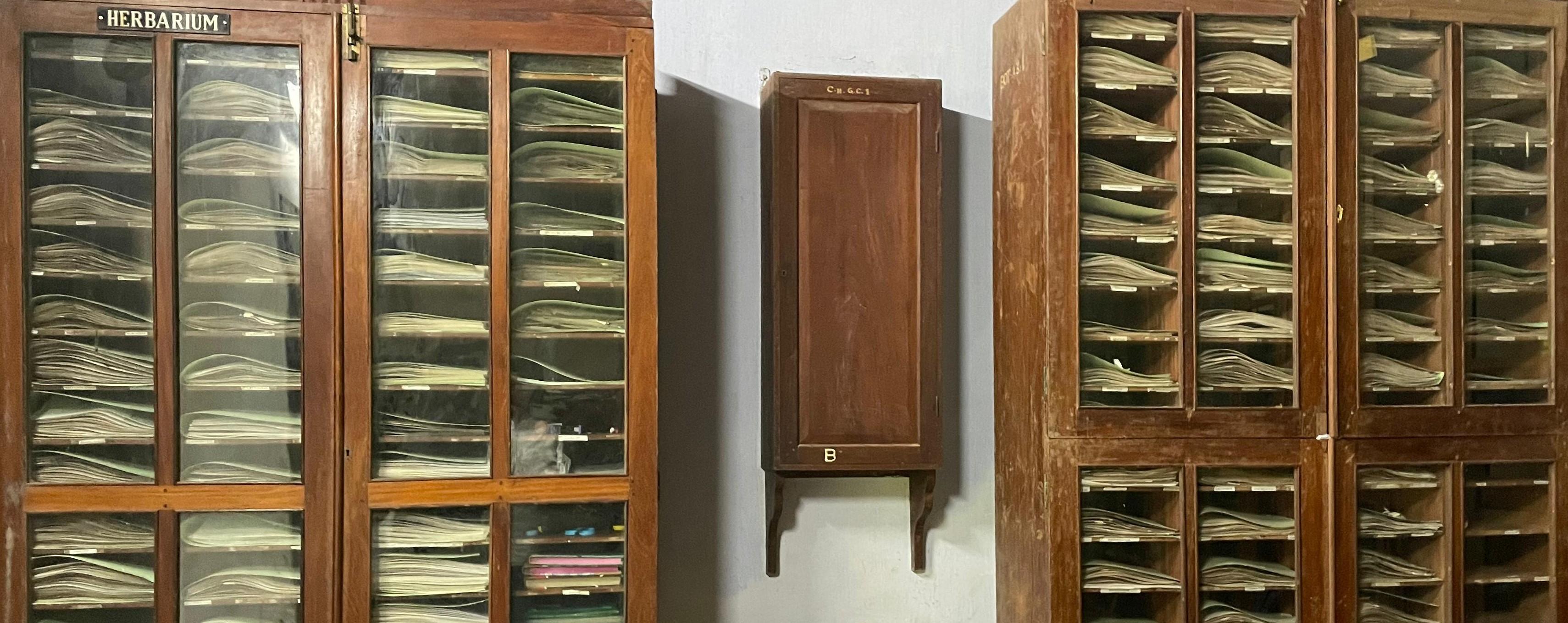Our Top Course
The Zamorin's Guruvayurappan College in Kozhikode is renowned for its commitment to academic excellence and research. One of its most treasured resources is the herbarium, a crucial facility for the study of plant sciences. The herbarium serves as a comprehensive repository of plant specimens, providing invaluable support to researchers, educators, and students. It plays a significant role in the conservation of plant biodiversity and the advancement of botanical knowledge.
Collections and Specimens
The herbarium at The Zamorin's Guruvayurappan College boasts an extensive collection of plant specimens. These specimens represent a wide array of plant families and genera, including flowering plants, ferns, bryophytes, and algae. The collection encompasses specimens from various habitats, including forests, wetlands, grasslands, and coastal regions.
Key Features of the Collection:
1. Regional Flora: The herbarium focuses on documenting the flora of Kerala and the Western Ghats, one of the world's biodiversity hotspots. This includes endemic, rare, and threatened species.
2. Historical Collections: The herbarium houses historical specimens collected by renowned botanists, providing a glimpse into the botanical diversity of the past.
3. Diverse Plant Groups: The collection includes a wide range of plant groups, from common species to those with significant ecological or economic importance.
4. Ethnobotanical Specimens: Specimens used in traditional medicine and local practices are also documented, highlighting the cultural significance of plants.
Research and Education
The herbarium is an essential resource for botanical research and education. It supports a wide range of academic and scientific activities, contributing to the advancement of knowledge in plant sciences.
Research Activities:
1. Taxonomy and Systematics: Researchers use the herbarium to study plant taxonomy, the classification and naming of plants. This involves examining morphological features, comparing specimens, and identifying new species.
2. Ecology and Conservation: The herbarium provides crucial data for ecological studies and conservation efforts. Researchers can analyze plant distributions, habitat preferences, and the impact of environmental changes on plant diversity.
3. Ethnobotany: The herbarium supports research into the traditional uses of plants by documenting ethnobotanical knowledge. This helps in understanding the cultural importance of plants and their potential applications.
4. Climate Change Studies: By comparing historical and contemporary specimens, researchers can study the effects of climate change on plant distribution and phenology.
Conservation and Biodiversity
The herbarium plays a pivotal role in plant conservation and the study of biodiversity. By documenting plant species and their distributions, the herbarium contributes to the conservation of plant diversity and the protection of endangered species.
Conservation Efforts:
1. Documentation of Rare Species: The herbarium focuses on documenting rare, endangered, and endemic species, providing essential data for conservation planning and management.
2. Habitat Monitoring: Herbarium specimens serve as a record of plant communities and habitats over time. This helps in monitoring changes in biodiversity and identifying areas in need of conservation.
3. Collaborations: The herbarium collaborates with conservation organizations, government agencies, and other research institutions to promote plant conservation and biodiversity research.
Technological Integration
The herbarium at The Zamorin's Guruvayurappan College is committed to integrating modern technology to enhance its functionality and accessibility.
Digital Herbarium:
1. Digitization of Specimens:The herbarium is actively digitizing its collection, creating high-resolution images of specimens along with their associated data. This digital herbarium is accessible to researchers and the public worldwide.
2. Database Management: A comprehensive database is maintained to catalog and manage the herbarium's collection. This includes detailed information about each specimen, such as taxonomic classification, collection data, and geographic coordinates.
3. Online Access: The digital herbarium and database are available online, allowing researchers to search and access specimens remotely. This facilitates global collaboration and data sharing.
Advanced Tools:
1. Geographic Information Systems (GIS): GIS technology is used to map plant distributions and analyze spatial patterns. This aids in studying plant biogeography and identifying conservation priorities.
2. Molecular Techniques: The herbarium supports research that integrates molecular techniques, such as DNA barcoding, to enhance taxonomic studies and identify cryptic species.
Community and Outreach
The herbarium is dedicated to engaging with the community and promoting the importance of plant biodiversity and conservation.
Community Engagement:
1. Public Awareness Programs: The herbarium organizes public lectures, exhibitions, and awareness programs to educate the community about the significance of plants and the role of herbaria in conservation.
2. Citizen Science Projects: The herbarium encourages community involvement in plant documentation and conservation through citizen science projects. Volunteers can participate in plant surveys, specimen collection, and data recording.
3. Educational Collaborations: The herbarium collaborates with schools and colleges to promote botanical education and inspire young minds to pursue careers in plant sciences.
The herbarium at The Zamorin's Guruvayurappan College is a vital resource for botanical research, education, and conservation. By documenting and preserving plant biodiversity, supporting interdisciplinary research, and engaging with the community, the herbarium plays a crucial role in advancing botanical knowledge and promoting the sustainable use of plant resources. Its commitment to integrating modern technology and fostering global collaboration ensures that it remains at the forefront of botanical research and conservation efforts.


